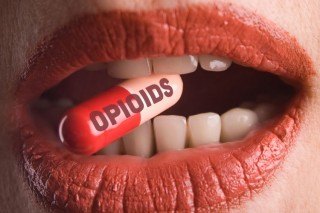Prescription drug use and drug abuse have become a regular subject of real concern in the past few years. How can an individual become addicted to prescription drugs? What are the most frequently misused prescription drugs?
The Most Abused Prescription Drugs
The most frequently drug abuse prescription drugs fall into three categories, namely:
• Opioids (pain medication).
• Depressants.
• Stimulants.
Any one of these medications, when used appropriately, remains a helpful tool in a physician’s arsenal of healing. But when these substances are misused, harm, addiction, and death can occur.
Opioids
Opioids come from poppy seeds, just like heroin. Many of the opioids used for pain medications are synthetics. Opioids continue to be prescribed for people with higher pain levels than over-the-counter medications can relieve. Usually, opioid pain relievers are given only for a short period, for instance, after an injury or surgery. While opioids do relieve pain, they also cause a sense of euphoria. Some individuals who take opioids enjoy the feeling of euphoria so much that they continue to want to use the medication long after they need it.
Other people take opioids because they enjoy the feeling of euphoria the drug gives them. If they can’t figure out how to legally get the medications through their doctor, they steal the medications from others or get them from dealers on the streets.
Some of the many negative side effects of using opioids are sedation and drowsiness, dizziness, problems with coordination, lowered blood pressure, lowered respirations, addiction due to a tolerance building up over time of drug abuse, and overdoses including death.
People who use opioids tend to need increasingly larger doses of the substance over time to get the same effects. For some long-term opioid users, the only place to go to keep the high is to heroin.
Signs of opioid drug abuse are:
• Constipation.
• Upset stomach.
• Slow breathing.
• Sleepiness.
• Confusion.
• Stealing prescriptions.
• Taking more medication than prescribed.
• Looking for pain medication from several doctors.
• Needing more pills to achieve the desired effect.
Central Nervous System Depressants
Sometimes these depressant substances are called tranquilizers or sedatives. The two most often misused types of tranquilizers currently are benzodiazepines and barbiturates. These substances react in the body with a calming and soothing effect. Anyone can have stresses and become agitated in today’s modern, fast-paced world. Many folks find they have high anxiety and problems sleeping. Individuals who are prescribed medications for calming them on a temporary basis can become easily dependent upon these depressants, especially if they are used for a long period or if the dose is increased.
Depressant drugs should be stored in a safe place and monitored frequently for use and drug abuse. Any medication that is easily available to others remains subject to theft and being sold on the streets. Store any medications in a cool, dry place that is not easily accessible to visitors to your home.
Signs of sedative use include:
• Sleepiness.
• Confusion.
• Clumsy walking.
• Coordination problems.
• Slow respiration rate.
• Mental slowness or problems remembering.
• “Losing” prescriptions to get more drugs prescribed.
Stimulants
Stimulants remain medications that increase heart rate, brain activity, and alertness. Stimulants remain a crucial way to treat some disorders, such as ADHD. Contrary to what a person might think, individuals with hyperactivity and ADHD become calmer when they take stimulants. People who need more energy or who feel fatigued routinely can be prescribed stimulants, too.
Unfortunately, stimulants remain used by those who want to stay awake for a long time and who enjoy the energy and pep that the drugs can give them. These people get their stimulants through theft, doctor shopping or on the streets to keep their high going.
Signs that an individual is using stimulants are:
• Lower or no appetite.
• Irritability.
• High temperature and blood pressure.
• Inability to sleep.
• Fast or irregular beating of the heart.
• Paranoia, the feeling that someone is out to get you.
• Anxiety.
Addiction starts in several different ways. In the first scenario, an individual takes a higher dose of medication than prescribed by a physician. When a medication doesn’t work as well as a person would like it to, the individual increase the dose instead of contacting their physician for help. These people adjust their medication levels without their doctor’s care and are not trained in the possible side effects or addiction properties of these drugs. Before they know it, they have become addicted to the medication. Or they like the effect of the medication so much that they want to continue to take the drug after it is no longer needed.
For instance, people with chronic pain can continue to take their pain medication in increasingly large doses if they become tolerant to the drug. These individuals continue to increase their pain dosages instead of correcting the problem causing the pain. Individuals who have had surgery or a medical procedure may enjoy how they feel on pain medication. They continue to take medication after the pain has stopped. Once their physician refuses to prescribe more pain medication, they doctor shop or go to the streets for their pain medications.
Other prescription drug addicts take these hard-to-get medications recreationally. Taking many prescription drugs recreationally is dangerous, especially if the substances are combined with street drugs or alcohol. There are several dangers in taking drugs not prescribed to you, including:
• Physical negative reactions to the medication.
• Damage to kidneys or liver.
• No one is monitoring the dosage of the substances used.
• Overdosing on many medications can lead to death.
• Combining prescriptions with alcohol or other drugs very likely can lead to permanent physical damage or death.
Conclusion
Stimulants, sedatives and opioid pain relievers continue to be the prescription drugs of choice. If you need to take any of these medications, be sure to follow your doctor’s instructions exactly. Keep your medications in a safe place where others can’t get into them and definitely seek your doctor’s help if you feel like you may be addicted to a prescription medication.


